Diplomatic Bluebook 2017
Chapter 3
Japan's Foreign Policy to Promote National and Worldwide Interests
2.Cultural Diplomacy
(1) Overview
MOFA and the Japan Foundation (JF) operate various projects to create positive images of Japan in foreign countries, boost the value of brands throughout Japan while encouraging greater understanding of Japan, and foster pro-Japanese individuals and groups for the future. For example, the “cultural projects of the diplomatic missions overseas” introduce a wide range of Japanese cultures from traditional to contemporary, animation, manga, fashion, architecture, and design. MOFA is implementing the “Japan Brand Program” to promote Japan's various charms from craftsmanship that aims to fuse tradition with the contemporary, to state-of-the-art technologies, through lectures and workshops held by specialists dispatched from Japan. This program is designed to pave the way for international exchanges. Currently, “All-Japan” efforts are also being made to promote the charms of the countryside to boost the number of inbound foreigners through various overseas PR projects.
In addition, in order to promote support for Japan and better understanding of Japan through Japan studies, MOFA implements the following activities: provision of information on studying in Japan through Japan's diplomatic missions overseas; building alumni networks of the foreign nationals who have studied in Japan; cooperation with the JET Programme which invites young people from abroad to the local governments in Japan, exchange programs for youth and adults from Asia, North America and Europe; sending visiting professors to universities and research institutions overseas; and grant program for research activities.
Promoting Japanese language education overseas helps foster future leaders who will build a bridge between Japan and overseas, deepen understanding towards Japan, and lay a foundation for friendship with other countries. Therefore, MOFA engages in sending Japanese language specialists overseas, providing training for foreign Japanese language teachers in Japan, and developing Japanese language teaching materials through the Japan Foundation.
It is also important to enhance the presence of Japan in the area of sport for the successful delivery of the Olympic and Paralympic Games Tokyo 2020. As a part of the “Sport for Tomorrow (SFT)” program, MOFA runs various sports exchanges and sports promotion support projects, dispatches JICA volunteers and sports instructors through the Japan Foundation, and provides sports equipment and builds facilities by making use of the Cultural Grant Assistance in many countries.
In addition, by utilizing the budget allocated to strategic communications, MOFA intends to continue to strengthen its support for Japan studies, expand the scope of people-to-people exchanges and sports exchange programs, and promote Japanese language education.
In cooperation with the United Nations Educational, Scientific and Cultural Organization (UNESCO), Japan has made earnest efforts to preserve the world's tangible and intangible cultural heritage. Moreover, Japan is actively taking part in promoting the international framework for safeguarding heritage through the World Heritage Convention, the Convention for the Safeguarding of the Intangible Cultural Heritage, etc. (see (7) “Cooperation with the United Nations Educational, Scientific and Cultural Organization (UNESCO)” for details).
(2) Culture Programs
It is important for Japan's diplomatic policies to be smoothly implemented in the international community to boost understanding towards Japan among foreign nationals who form the foundation of public opinion and policy making, as well as to make Japan's image even more positive. With this importance in mind, MOFA engages in promoting the diverse attractiveness of Japan through diplomatic missions overseas and the Japan Foundation. As part of diplomatic activities to promote a better understanding of Japan and to cultivate pro-Japanese groups, the diplomatic missions overseas organize comprehensive cultural activities within their covering areas. These activities include the screening of movies, music performances, martial arts demonstrations, exhibitions of pottery, traditional toys, origami creations and ikebana as well as planning and organizing of Japanese speech contests. Moreover, Japanese pop culture such as anime and manga, as well as Japan's food culture are being actively promoted in recent years.
Furthermore, MOFA conducts large-scale and comprehensive programs in commemorative years celebrating diplomatic events in cooperation with government and private organizations through mutual visits of dignitaries, various conferences, and public relations/cultural projects, aiming for effective promotion of the understanding about Japan. For example, a piece from the Noh theater was performed in 2016 to commemorate 150 years of diplomatic relations between Japan and Italy.
In collaboration with MOFA and the diplomatic missions overseas, the Japan Foundation runs interactive arts and cultural exchange projects to promote Japanese culture and arts in a variety of forms throughout the world. The Foundation also promotes and provides support for Japanese language education and research on Japan. In celebration of TICAD VI, a traditional Japanese Taiko drum, Tsugaru shamisen and shakuhachi music performance was put on in Nairobi, Kenya, in August, attracting a total of approximately 750 people.
Furthermore, the Japan Foundation Asia Center is steadily implementing the “WA Project: Toward Interactive Asia through Fusion and Harmony” announced by Prime Minister Abe in December 2013, with main pillars of support for Japanese language education and interactive arts and cultural exchange projects. Through the “NIHONGO (Japanese language) Partners” program, which is the core project to support Japanese language education, 519 teaching assistants in total were dispatched to secondary education institutions in 10 countries in Southeast Asia, and implemented the exchange program through the introduction of Japanese culture as well as Japanese language education by FY2016. As a result, many school officials who received the “NIHONGO Partners” highly evaluated the program, saying its activities contributed to increased motivation for students to learn.
As part of the interactive arts and cultural exchange program, the Japan Foundation Asia Center implemented “Time of Others,” which introduced works by about 20 artists, mainly young ones, in Asia and Oceania, and “Dance Dance Asia,” which aimed to connect Asian countries through street dances. The Japan Foundation also introduced Asian movies to Japan in collaboration with the Tokyo International Film Festival.
The Japan International MANGA Award was launched by MOFA in 2007 with the aim of rewarding manga creators who contributed to the spread of manga culture overseas. The 10th International MANGA Award of 2016 received 296 entries from 55 countries and regions, and the Gold Award went to the work of a French applicant. Moreover, applications were received for the first time from Estonia, Kuwait, Democratic Republic of the Congo, and Panama, making for a record number of countries and regions from which applications were received.
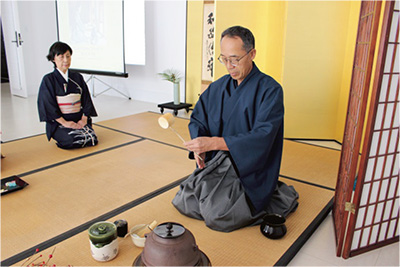 Japanese tea ceremony lecture and demonstration (November, U.S.).
Japanese tea ceremony lecture and demonstration (November, U.S.).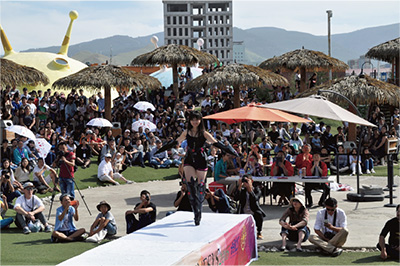 Japan pop culture festival (August, Mongolia).
Japan pop culture festival (August, Mongolia).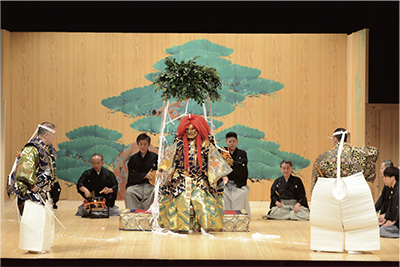 Noh performance (Program: Tsuchigumo) (September, Italy).
Noh performance (Program: Tsuchigumo) (September, Italy).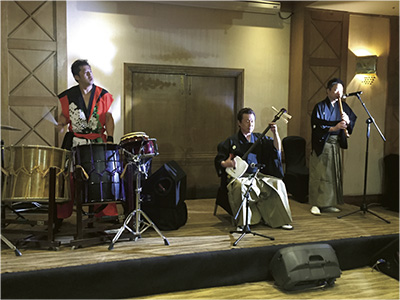 Super Taiko Concert at TICAD VI (August, Kenya).
Super Taiko Concert at TICAD VI (August, Kenya).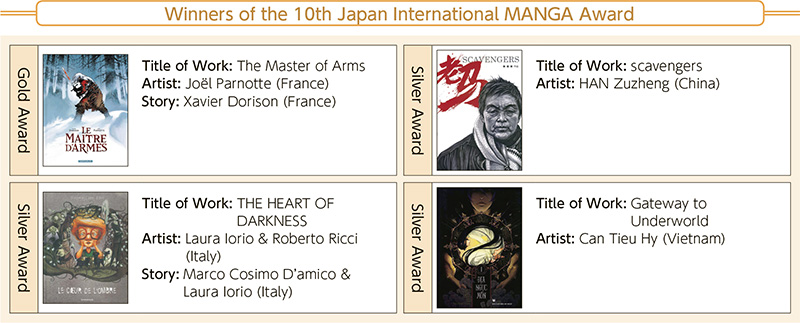
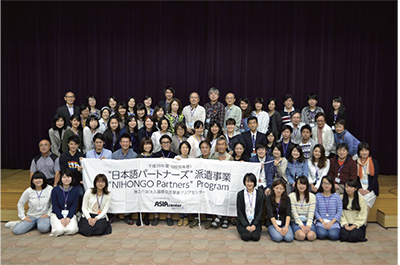 Pre-departure training for NIHONGO Partners dispatched to Thailand, Myanmar, and Singapore (April, The Japan Foundation Japanese-Language Institute). (Photo: The Japan Foundation)
Pre-departure training for NIHONGO Partners dispatched to Thailand, Myanmar, and Singapore (April, The Japan Foundation Japanese-Language Institute). (Photo: The Japan Foundation)(3) People-to-People Exchange and Exchange in the Area of Education
MOFA carries out a number of invitation projects to build personal connections and promote understanding of Japan by inviting foreign nationals who have a great influence on shaping public opinion and policy making process, and who are expected to play a leading role in various fields. Also, in the area of education and sports, MOFA carries out various activities to promote exchanges among a wide range of people. These projects not only promote mutual understanding and friendships but also enhance Japan's presence in the international community, which holds great significance for benefitting the national interest of Japan.
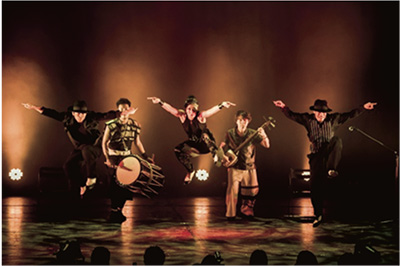 Dance groups from Japan and Southeast Asia performing in Tokyo as part of “Dance Dance Asia” (October, Tokyo).
Dance groups from Japan and Southeast Asia performing in Tokyo as part of “Dance Dance Asia” (October, Tokyo).A Exchange with Foreign Students
MOFA actively introduces the attractiveness of studying in Japan to foreign students and opportunities to study in Japan through diplomatic missions overseas. It also implements application and selection procedures to accept competent students from around the world as the Japanese Government (MEXT) Scholarship students. Furthermore, it is making efforts to maintain relations with former foreign students who have returned to their home countries through Japan Alumni Associations and to foster pro-Japanese individuals and groups.
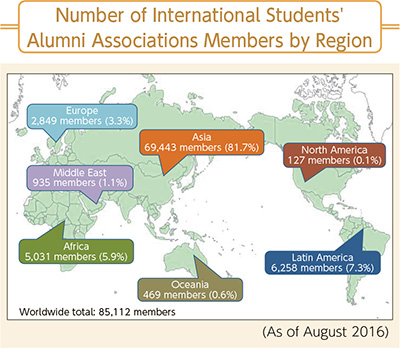
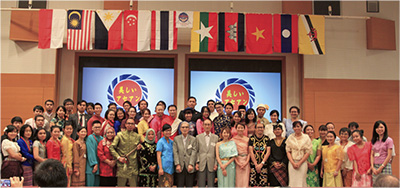 ASEAN Festival (organized by ASJA International) (September 11, National Olympics Memorial Youth Center, Tokyo Photo: ASJA International)
ASEAN Festival (organized by ASJA International) (September 11, National Olympics Memorial Youth Center, Tokyo Photo: ASJA International)B JET Programme (The Japan Exchange and Teaching Programme)
The JET Programme was launched in 1987 to improve foreign language education and promote international exchanges in local areas. In FY2016, a total of 4,952 people, including 1,946 new participants from 40 different countries, took part in the program and were dispatched to all over Japan. This program is administered by local authorities, in cooperation with the Ministry of Internal Affairs and Communications (MIC), MOFA, the Ministry of Education, Culture, Sports, Science and Technology (MEXT), and the Council of Local Authorities for International Relations (CLAIR). They invite young foreign nationals to Japan and appoint them to posts in local governments and schools. MOFA is responsible for the application and selection process, pre-departure orientation, and support for the activities of the JET Alumni Association (JETAA has about 29,000 members). JETAA engages in activities to introduce Japan in various countries, and many former JET participants engage actively in various fields as pro-Japanese in different parts of the world. Former JET participants are valuable human/diplomatic assets for Japan. In November 2016, a commemorative ceremony was held in Tokyo to mark the 30th anniversary of the JET Programme.
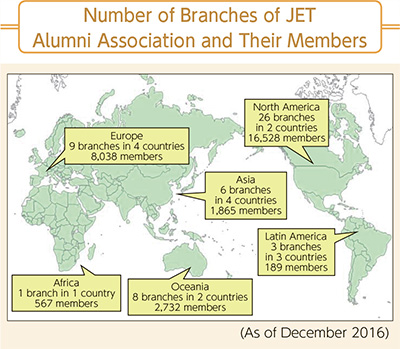
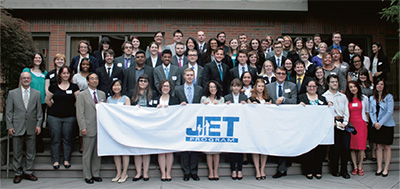 JET Programme participants departing from the Consulate-General of Japan in Detroit (U.S.) (July 29, Detroit, U.S.).
JET Programme participants departing from the Consulate-General of Japan in Detroit (U.S.) (July 29, Detroit, U.S.).C Sport Exchange
Sports enable communication beyond languages and can be an effective tool for promoting friendly relations and understanding of Japan. While Japan draws more attention in the world as the host country of the Olympic and Paralympic Games in Tokyo 2020, the Government of Japan has been implementing the “Sport for Tomorrow (SFT)” program as an international cooperation initiative through sports since January 2014. This program runs various sports exchanges, promotional support, and human development projects in different countries with the aim of spreading the value of sports to over 10 million people in more than 100 countries by 2020. Starting in FY2015, MOFA has been implementing “Projects for Sports Diplomacy Enhancement” to dispatch and invite athletes and instructors, provide equipment, hold receptions at diplomatic missions overseas, and advocate the importance of sports. It also contributes to developing bilateral relations through implementing the programs more promptly and effectively in response to requests from the foreign governments and sports associations. These SFT projects have enhanced the presence of those engaged in sports in Japan in the international sports community.
 Japanese badminton instructors dispatched to Brunei (October, Brunei).
Japanese badminton instructors dispatched to Brunei (October, Brunei).(4) Exchange in the Intellectual Realm
A Japanese Studies
MOFA comprehensively supports a range of overseas research activities related to Japan's politics, economics, society and culture. In FY2016, MOFA provided various forms of support through the Japan Foundation. These included sending visiting scholars, enhancing the collection of books on Japan and providing research grants to 56 institutions of Japanese studies in 26 countries and regions, such as universities and research institutions which are considered hubs for Japanese studies. Fellowship status was also granted to 175 researchers in Japanese studies from 48 countries and regions, including those who were granted in the previous year. This helped the researchers conduct research and study activities in Japan (including those scheduled in the 4th quarter of FY2016). MOFA also helps academic societies to promote network building among researchers and research institutions on Japan in different countries and regions.
B Intellectual Exchanges
MOFA implements intellectual exchange projects, putting emphasis on cooperative work and exchange with other countries. Specifically, MOFA implemented seminars and symposia on common international agenda, and programs to deepen the understanding of modern Japan at major universities overseas through the Japan Foundation. MOFA plans and supports exchange programs to strengthen relationships and deepen mutual understanding through holding conventions in various fields and at various levels in cooperation with NPOs and other institutions.
C U.S.-Japan Conference on Cultural and Educational Interchange (CULCON)
CULCON is a public-private binational advisory panel comprised of experts from Japan and the U.S. to discuss issues on educational and cultural exchanges between both countries. The 27th Plenary Session was held in Tokyo in June, and the joint declaration recognized the urgent need for the fostering of a next-generation leader to oversee future Japan-U.S. relations. Based on this, it was decided that initiatives would be implemented with the aim of achieving the goal of “doubling two-way student exchanges by the year 2020,” which was set by CULCON and mentioned in the Joint Statement at the Japan-U.S. Summit Meeting in 2014. It was also decided that support would be strengthened for Japanese language education in the U.S. and that the program would be bolstered to foster experts in Japanese art in the U.S. Moreover, it was agreed that a new task force would be set up to oversee intellectual and people-to-people exchanges with a focus on fostering next-generation leaders who will be responsible for the future of U.S.-Japan relations.
D Cooperation with the United Nations University (UNU)
The Government of Japan recognized the importance of the establishment of UNU, which contributes to the international community through study and research on global issues and human resources development. Japan invited UNU to set up its headquarters in Japan (Tokyo) and has provided various cooperation and support for 40 years. UNU, in collaboration with Japanese universities and research institutions, is engaged in international issues such as peace, development, and the environment on which Japan focuses and contributes to the dissemination of the policies of the Government of Japan. UNU established Master's and Doctoral Programmes in 2010 and 2012, and has made efforts to improve the quality of its global human resources development programs.
(5) Promotion of Japanese Language Education
The interest in the Japanese language has been increasing among people, especially the youth overseas, as Japanese companies have been expanding their operations overseas, and Japanese pop culture is prevailing worldwide along with the globalization of Japanese economic structure. Further promotion of the Japanese language overseas leads to creating a favorable international environment for Japanese people and companies. Currently, about 3.65 million people in 137 countries and regions overseas are learning Japanese language (according to the preliminary figures by the Japan Foundation Survey on Japanese-Language Education Abroad 2015). The number of learners had been steadily increasing since the first survey in 1979, but it decreased for the first time in the present survey. This was due to the fact that the number of learners of Japanese in these three countries has been greatly reduced, especially as a result of educational reforms in ROK, Indonesia, and China where Japanese learners are concentrated. On the other hand, in other countries and regions, the number of Japanese learners has increased by around 170,000. In 2016, approximately 870,000 examinees (the number of applicants, including tests conducted in Japan) took the Japanese-Language Proficiency Test offered by the Japan Foundation in 273 cities of 74 countries and regions worldwide.
MOFA engages in accommodating various needs of Japanese-language educational institutions overseas through the Japan Foundation (JF). Specifically, through dispatching of Japanese language specialists overseas, providing training in Japan for Japanese teachers and foreign diplomats overseas, developing teaching materials, and promoting the “JF Japanese Language Education Standard.” Moreover, the JF aims to further increase the number of Japanese language learners overseas through further utilization of audio-visual teaching materials, such as learning support websites which use animation or manga, and through directly managed Japanese language courses.
The JF has also been making efforts to create and expand the “JF Nihongo Network (commonly known as Sakura Network)” since FY2007, mainly at JF overseas offices and universities where Japanese language specialists have been dispatched in order to develop programs for Japanese language education responding to the various needs of each country/region, and to enhance partnerships among relevant institutions. Currently, 287 organizations including universities and Japanese language teachers' associations, which play central roles in implementing Japanese language education, are registered as new network members, and the JF strives to enhance assistance to them.
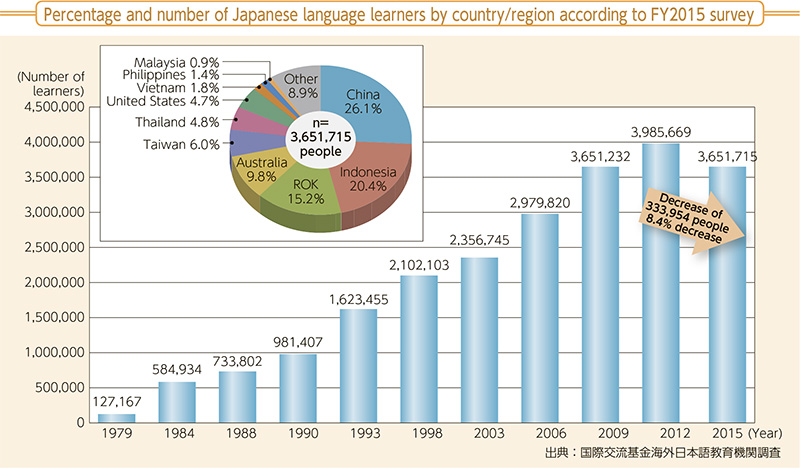
(6) Cultural Grant Assistance
The Government of Japan provides Cultural Grant Assistance, as part of Official Development Assistance (ODA) to promote culture and higher education in developing countries thereby enhancing mutual understanding and friendly relations between Japan and such countries. The activities implemented in 2016 include seven General Cultural Grant Assistance Projects (total of around 1.69 billion yen) and 31 Grant Assistance for Cultural Grassroots Projects (total of around 260 million yen). In 2016, General Cultural Grant Assistance put emphasis on the preservation of the cultural heritage and the promotion of broadcasting programs, and Grant Assistance for Cultural Grassroots Projects put emphasis on the fields of sports and the Japanese language.
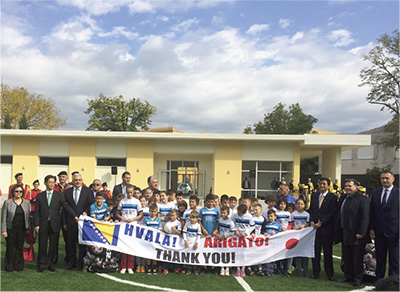 Grant Assistance for Cultural Grassroots Project State Minister for Foreign Affairs Kishi attending the handover ceremony of “The Project for Rehabilitation of Sports Center in Mostar for Community Reconciliation through Sports Activities” (October 9, Mostar, Bosnia and Herzegovina).
Grant Assistance for Cultural Grassroots Project State Minister for Foreign Affairs Kishi attending the handover ceremony of “The Project for Rehabilitation of Sports Center in Mostar for Community Reconciliation through Sports Activities” (October 9, Mostar, Bosnia and Herzegovina). Class held at the Multimedia Language Laboratory of Darma Persada University in Indonesia with equipment provided through a Grant Assistance for Cultural Grassroots Projects (July, Indonesia).
Class held at the Multimedia Language Laboratory of Darma Persada University in Indonesia with equipment provided through a Grant Assistance for Cultural Grassroots Projects (July, Indonesia).(7) Cooperation through United Nations Educational, Scientific and Cultural Organization (UNESCO)
Japan is actively involved in various projects of UNESCO in the fields of education, science, and culture. UNESCO is the international organization of which post-war Japan first became a Member State in 1951. Since then, UNESCO has been cooperating with Japan in support of education, science, and culture, etc., in developing countries.
In the field of culture, Japan offers active cooperation for the prevention and promotion of tangible and intangible cultural heritages of the world and support in the field of human resources development. At the same time, Japan actively participates in the international framework for safeguarding cultural heritage. As part of such activities, Japan established two Japanese Funds-in-Trust at UNESCO, aiming for the protection of tangible and intangible cultural heritages. Through the UNESCO Japanese Funds-in-Trust for the Preservation of World Cultural Heritage Projects, and with Japanese experts playing a leading role, Japan supports many projects for conservation and restoration of sites, such as Angkor in Cambodia, Kasubi Tombs in Uganda, and the restoration of cultural heritage in Nepal after the earthquake, while contributing to the human resources development so that local people can protect their cultural heritage by themselves in the future. In particular, Japan has provided support continuously for the preservation and restoration work of ancient ruins of Angkor in Cambodia, which started in 1994. Through the UNESCO Japanese Funds-in-Trust for the Safeguarding of the Intangible Cultural Heritage, the following projects have been implemented: the handing down of traditional performing arts such as music and dance, and traditional crafts in developing countries to the next generation; development of domestic institutions and capacity building of relevant parties to enhance the ability of countries to protect intangible cultural heritage by themselves.
In the field of education, Japan has set up the Japanese Funds-in-Trust for the Capacity-Building of Human Resources, which aims to foster human resources in developing countries, and provide support for human resources development, mainly in the area of education, through promoting, e.g., “Education for All (EFA)” led by UNESCO. As for the Education for Sustainable Development (ESD), Japan provided various support for the Aichi Nagoya Declaration adopted at the UNESCO World Conference on Education for Sustainable Development (ESD), co-hosted by UNESCO in Okayama City, Okayama Prefecture, and Nagoya City, Aichi Prefecture in November 2014. Moreover, in September 2016, winners of the UNESCO-Japan Prize on Education for Sustainable Development were announced and the “Okayama ESD Project” nominated to UNESCO by Japan was awarded the prize. The ceremony was held at the 200th session of the UNESCO Executive Board in October 2016.
Gender equality is another field that UNESCO is investing effort into. Projects were implemented in Niger with the aim of improving the environment for women in the education system (completed in May 2016), as well as in Iraq to support the education of women refugees within the country and to ensure the sustained enrollment of girls into schools and improve the effectiveness of education in Ethiopia.
UNESCO is promoting organizational reform, decentralization and program reform, and Japan has continued providing support to UNESCO in these reform initiatives.
A World Heritage Convention
The World Heritage Convention aims to protect cultural heritage and natural heritages internationally as heritages to of all mankind. Japan became a party to the Convention in 1992 (as of December 2016, the number of parties to the Convention is 193). The sites listed on the “World Heritage List” are so-called “World Heritage” sites. They are classified into “Cultural Heritage” (monuments and remains), “Natural Heritage” (natural areas) and “Mixed Heritage” (having both cultural and natural elements). As of December 2016, a total of 1,052 World Heritage sites are inscribed on the World Heritage List. At the 40th session of the World Heritage Committee held in Istanbul, Turkey in 2016, it was decided to inscribe the Architectural Work of Le Corbusier, an Outstanding Contribution to the Modern Movement (which includes The National Museum of Western Art in Japan), upon nomination by Japan, France, and five other countries. This has raised the number of World Heritage in Japan to 20: 16 cultural heritage and four natural heritage sites.
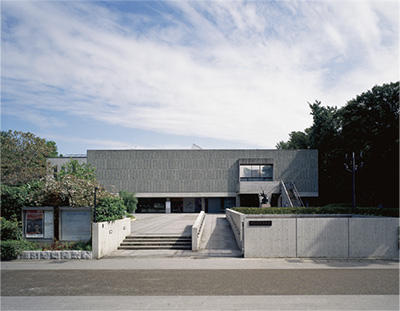 The Architectural Work of Le Corbusier, an Outstanding Contribution to the Modern Movement. (Photo: National Museum of Western Art of Japan)
The Architectural Work of Le Corbusier, an Outstanding Contribution to the Modern Movement. (Photo: National Museum of Western Art of Japan)B Convention for the Safeguarding of the Intangible Cultural Heritage
The Convention for the Safeguarding of the Intangible Cultural Heritage aims to develop an international system for safeguarding intangible cultural heritage, such as traditional performing arts and traditional craftsmanship techniques (as of December 2016, the number of parties to the convention is 172). Japan, which has a wealth of experience in safeguarding domestic intangible cultural properties, has provided active contributions by playing a leading role in developing the Convention, laying down the main sections of the operational directives for the implementation of the Convention. A total of 21 elements of intangible cultural heritage in Japan are inscribed on the Representative List of the Intangible Cultural Heritage of Humanity established in accordance with the Convention. It includes: Nogaku Theatre, Ningyo Johruri Bunraku Puppet Theatre and Kabuki Theatre, which have been proclaimed by UNESCO as “Masterpieces of the Oral and Intangible Heritage of Humanity.” As of November 2016, Yama, Hoko, Yatai, float festivals in Japan was submitted by Japan and was inscribed on the list; this is an extension of Yamahoko, the float ceremony of the Kyoto Gion festival and Hitachi Furyumono, which were inscribed on the list in 2009, incorporating similar festivals existing all over Japan.
C UNESCO Memory of the World Programme
The UNESCO Memory of the World Programme was established in 1992 to preserve and promote valuable historical materials. As of December 2016, 348 items have been inscribed. After applications opened for public for nominations by the Japanese National Commission for UNESCO in December, Kozuke Sanpi (the Three Cherished Stelae of Ancient Kozuke) and the Sugihara List were submitted as nomination proposals from Japan. A decision on whether to inscribe them is expected to be made by around the summer of 2017.
Moreover, as seen in the submission and inscription of the documents related to the Nanjing Massacre by organizations in China in October 2015, unilateral submission and inscription based only on the assertions of one country, despite there being clear discrepancies between the views of the countries involved, are in violation of the founding principle of UNESCO of promoting friendly ties and mutual understanding among member countries. As such, Japan is continuing efforts to advance the review process.
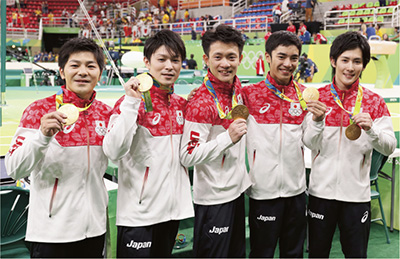 The men's team all-round won the gold medal at the Rio Olympics (Photo: Aflo Sport)
The men's team all-round won the gold medal at the Rio Olympics (Photo: Aflo Sport)The success of Japan's gymnastics team at the Rio Olympics
The success of the Japanese gymnastics team (Taisou Nippon) at the 2016 Rio de Janeiro Olympic Games inspired and touched the people in Japan. The confident and dignified manner that the Japanese team competed with in this major event gave courage and smiles to the spectators, and resulted in the gold medals won by the men's team all-round and Kohei Uchimura for individual all-round, fourth place the women's team all-round, achieved for the first time in 48 years, and the bold moves in gymnastics rhythmic that helped the team proceed to the finals.
The presence of sports associations in Japan
National Sports Federations play a part in the success of these athletes. Various National Sports Federations exist for the respective Olympic sports. In the case of gymnastics artistic, the Japan Gymnastics Association is constantly at hard work for, and in cooperation with the athletes competing in gymnastics artistic, gymnastics rhythmic and trampoline; it is not possible for an athlete to participate in a competition or partake in a training camp on his or her own. The Ministry of Foreign Affairs works together with such sports associations in Japan, invites athletes and coaches from overseas to Japan through the “Project for Sports Diplomacy Enhancement” launched in 2015, and dispatches Japanese instructors overseas. In addition, it also provides assistance in transporting sports equipment, and holds receptions at diplomatic missions abroad to facilitate networking with their counterparts in the field of sports. Through such activities, it seeks to foster friendship and promote knowledge about Japan overseas, as well as to deepen mutual understanding. It also aims to contribute to improving the status of Japanese athletes and sports officials in the international arena.
The role of the Japanese President of the International Gymnastics Federation drew attention
At the Congress held in Tokyo in October 2016, Mr. Morinari Watanabe, then the General Secretary of the Japan Gymnastics Association, was elected the 9th President of the International Gymnastics Federation (FIG). He secured a sweeping victory with 100 votes out of 119 FIG members from around the world. Remarkably he is the fourth Japanese in the last 23 years to assume the Presidency of the International Sports Federations for the Olympic Games and the first person from Asia to be appointed to the position. While his capabilities, accomplishments as well as tireless campaign efforts were certainly the factors for his successful outcome in the election, growth in the number of fans of Japan around the world as a result of inviting foreign gymnastics teams and coaches to Japan, and dispatching Japanese gymnastics instructors overseas is believed to have contributed to the victory he earned. Mr. Watanabe have spent one and a half years visiting more than 100 countries, particularly in Africa and Central and South America, to actively promote FIG among the countries where gymnastics sectors are still in the developing phase.
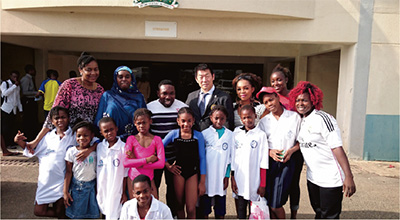 In Nigeria
In NigeriaHe is said to have spent only about ten days per month in Japan. While he was abroad, Japanese missions abroad held receptions which local individuals from the area of gymnastics and sports were invited to, and provided active support in coordination with the local gymnastics associations. Furthermore, through the Project for Sports Diplomacy Enhancement, the Foreign Ministry has invited gymnastic teams from Senegal, Tunisia, Nigeria, and Algeria to Japan, and sent Japanese instructors to Costa Rica.
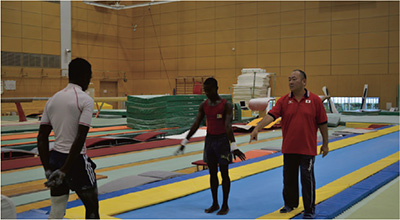 Gymnasts invited from Senegal
Gymnasts invited from SenegalMr. Watanabe, who won the elections with as many as 100 votes, is expected to play an active role toward the Olympic and Paralympic Games Tokyo 2020, including strengthening Japan's influence in the international sporting world and improving its negotiation capabilities in the global arena. Apart from the gymnastics, personnel from Japan also landed the official positions of other types of sports in 2016, including triathlon, golf, boating, fencing, and sailing. In view of 2020, and in order to raise the status of the Japanese individuals in the international sporting world, the Ministry of Foreign Affairs will continue to support them in their activities around the world.
Gotaro Ogawa, Special Advisor, All Japan Judo Federation
Judo as an intangible cultural asset of the world
Judo is well-known and popular in about 200 countries and regions. Though some small and poor countries in Africa and Central and South America often lack judo halls and its uniforms, those learning Judo put their best effort intraining, sitting up straight on their legs at the beginning and end of the sessions, and calling out commands such as “Sensei ni rei” in Japanese. As is generally known, the refereeing terminology used in the international judo competitions is Japanese such as “Ippon,” “Waza-ari,” and “Soremade.” It would not be an exaggeration to say that judo, which has penetrated all corners of the globe, is truly an intangible cultural asset of the world.
Exchanges in Judo through public-private sectors' cooperation
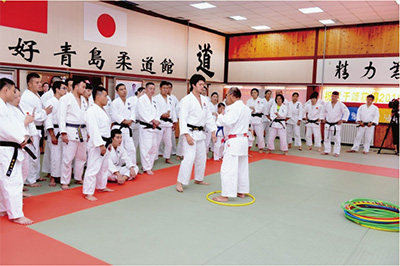 Japan-China Friendship Qingdao Judo Hall
Japan-China Friendship Qingdao Judo HallCountries from around the world call for the dispatch of instructors from Japan and Japan's hosting of judo training sessions. While such needs from outside of Japan are not adequately met, the Ministry of Foreign Affairs is engaged in activities to provide support, including working with the groups of judo to send instructors overseas, and donate tatami mats and judo uniforms. In FY2016, the Ministry also partnered with the All Japan Judo Federation to dispatch student volunteers and provide judo training, mostly to countries in Asia. The selected students became friends with judo learners in the developing countries, and gained valuable experiences while contributing to international exchange. Since 2006, the Ministry of Foreign Affairs has cooperated with the NPO Solidarity of International Judo Education established by Yasuhiro Yamashita, to engage in judo-related cooperation in China. The Ministry also utilized the Grant Assistance for Cultural Grassroots Project, under the Official Development Assistance (ODA) program, to renovate judo halls in Qingdao and Nanjing, and to instruct Chinese judo practitioners at these halls over several years through the NPO Solidarity of International Judo Education.
In the summer of 2016, a group of the Japanese nationals who had instructed the coaches in China travelled around Qingdao, Nanjing, and Beijing, and saw the remarkable development of Judo in these areas, and the sense of affinity toward Japan.
Judo thrives even in Nanjing
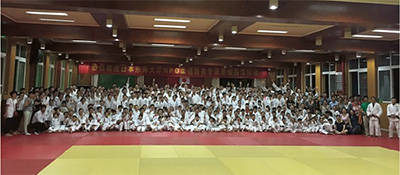 Spacious hall in the “Japan-China Friendship Nanjing Judo Hall”, and students at the judo hall
Spacious hall in the “Japan-China Friendship Nanjing Judo Hall”, and students at the judo hallJudo sessions in a judo hall in Nanjing went like the following.
When a group of instructors visited the “Japan-China Friendship Nanjing Judo Hall”, a massive judo hall laid with more than 300 tatami mats, they were met with a large red banner hung on the wall on which “A warm welcome” was written. Below the banner, approximately 200 children and adults dressed in judo uniforms were waiting in an orderly fashion. Once they entered the hall, everyone rushed toward them, saying “Ni hao” and bowing very courteously. There was no doubt that this polite behavior had been ingrained in the students by the Chinese instructors who had been trained in Japan. When the Japanese instructors began teaching them, their eyes lit up, and they began practicing with intense focus. There was a strong sense of respect for the instructors. While the parents of the children watched over the training session, their affection for the Japanese instructors was apparent. The number of members of this judo hall is about to reach 1,000 people. Despite the conflicting national sentiments between Japan and China, it was clear that judo had paved the way for a sense of affinity and respect toward Japan among many Chinese people.
Judo holds significant value for diplomacy as well. To meet the needs of countries abroad, measures are expected to be taken to allocate the budget for training Japanese instructors capable of engaging in long-term overseas instruction and drawing up an appropriate system for the particular purposes.
- Note: From the perspective of placing focus on promoting understanding of Japan's diplomacy through martial arts exchanges, the Ministry of Foreign Affairs, in addition to the judo exchanges in FY2016 implemented projects through the diplomatic missions overseas to introduce martial arts such as aikido, karate, and kendo, and provided support for transporting equipment such as kendo gear.


